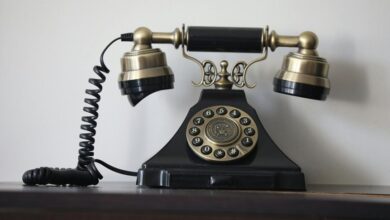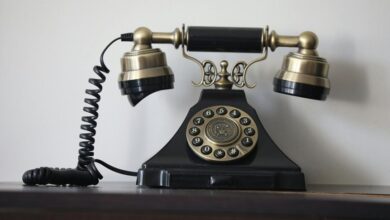
Tips for Choosing the Right Pipe Testing Equipment
Piping systems need to choose the right testing equipment that will best suit the piping system’s quality, safety, and durability. Regardless of whether the pipework is metal or plastic, the presence of powerful tools is the key factor for a successful assessment of the state of pipelines and their subsequent strengthening. This article will be of great importance to anyone who wants to select the right pipe testing equipment, especially for pipes made of different materials, including plastic ones.
Understanding Pipe Testing
However, before proceeding to the description of the selection, it is crucial to understand pipe testing. Testing is a method of checking leaks and areas of weakness, confirming compliance to standards, avoiding additional expenses like the repair and replacement of a piping system, ensuring safety in various applications, and increasing the service life of the system.
The first and crucial decision that needs to be made when choosing the correct pipe testing equipment is the determination of test needs. One should factor the kind of pipes under test, the general testing and evaluation objectives, mean pipe diameter and length, the testing environment, and set performance standards. In answering each of these questions, you will be in a position to determine the exact specifications and functionalities required of your pipe testing equipment.
The basic types of pipe test equipment:
However, before proceeding to the description of the selection, it is crucial to understand pipe testing. Testing is a method of checking leaks and areas of weakness, confirming compliance to standards, avoiding additional expenses like the repair and replacement of a piping system, ensuring safety in various applications, and increasing the service life of the system.
The first and crucial decision that needs to be made when choosing the correct pipe testing equipment is the determination of test needs. One should factor the kind of pipes under test, the general testing and evaluation objectives, mean pipe diameter and length, the testing environment, and set performance standards. In answering each of these questions, you will be in a position to determine the exact specifications and functionalities required of your pipe testing equipment.
Read also: Exploring Pigging Products: Types, Applications, and Benefits
The basic types of pipe test equipment:
Pressure Testing Equipment
Pressure testing plays a critical role in ensuring that pipes possess the necessary strength and are leak-free. The pressure gauges, pumps, and valves are among this equipment. The main criteria to consider when selecting pressure testing equipment consist of the maximum pressure the equipment can apply, compatibility of the equipment with many pipe materials, mobility, and models of display. Also, other things like having test sequences and easy-to-use data logging options will make it easier to do the pressure testing.
Leak Detection Equipment
It is important to detect the leakage as it contributes to the functionality as well as safety of piping systems. Some of the common leak detection equipment you might find would be the acoustic leak detectors, thermal imaging cameras, gas leak detectors, and the ultrasonic flow meters. When selecting leak detection equipment, think about the type of fluid or gas in your pipes, required sensitivity, ease of use, and integration with other pipe testing equipment. Consider also the equipment’s ability to pinpoint leak locations accurately and its performance in various environmental conditions.
Non-Destructive Testing (NDT) Equipment
NDT equipment allows for thorough pipe inspection without causing damage. Common NDT methods include ultrasonic testing, magnetic particle inspection, and radiographic testing. Consider the material of the pipes, level of detail needed, portability, and operator training requirements when choosing NDT equipment. Look for NDT tools that offer multi-method capabilities and advanced imaging technologies for comprehensive pipe analysis.
Pipe Camera Inspection Systems
Visual inspection is often crucial for identifying internal pipe issues. Pipe camera systems typically include a flexible cable with a high-resolution camera, a monitor for real-time viewing, and recording capabilities. When selecting a pipe camera system, consider the range of pipe diameters, cable length, image quality, and durability for various environments. Look for features like pan-tilt-zoom functionality and advanced lighting options to enhance visual inspections in challenging pipe conditions.
Factors to Consider When Choosing Pipe Testing Equipment
Accuracy and Precision
The reliability of your testing results depends on the accuracy and precision of your equipment. Look for high accuracy ratings, calibration options, and digital readouts for reduced human error. Consider equipment with self-diagnostic features and regular calibration reminders to maintain consistent accuracy over time.
Durability and reliability
Pipe testing equipment often needs to withstand harsh environments and frequent use. Consider equipment made from robust materials, with water and dust resistance ratings, good battery life for portable equipment, and comprehensive warranty and service options. Look for shock-resistant designs and equipment with proven track records in challenging field conditions.
Ease of Use and Training Requirements
To ensure efficient testing processes, choose equipment that is user-friendly and requires minimal training. Look for intuitive interfaces, clear displays, comprehensive user manuals, and available training programs. Consider equipment with built-in tutorials, step-by-step testing guides, and remote support options for quick troubleshooting.
Compatibility and Versatility
Selecting equipment that works well with various pipe materials and sizes can be cost-effective and efficient. Consider equipment that can test both metal and plastic pipes, with adjustable settings for different pipe diameters and modular systems for future upgrades. Look for multi-functional tools that can perform various tests to maximise versatility and value.
Portability and Size
For on-site testing, portability is crucial. Look for lightweight, compact designs, carrying cases for easy transportation, and battery-powered options for use in remote locations. Consider equipment with foldable or telescopic components to further enhance portability without compromising functionality.
Data Management and Reporting
Efficient data collection and reporting can streamline your testing processes. Consider equipment with built-in data storage, connectivity options for data transfer, and software for generating detailed reports and analysis. Look for cloud integration capabilities and automated report generation features to enhance data management efficiency.
Cost and Return on Investment
While it’s important to stay within budget, remember that investing in high-quality pipe testing equipment can save money in the long run. Consider the initial cost, ongoing maintenance expenses, potential savings from improved efficiency, and the equipment’s expected lifespan. Evaluate the total cost of ownership, including training, upgrades, and long-term support services.
Conclusion
Choosing the right Pipe Testing equipment for plastic pipes is essential for maintaining the safety, efficiency, and longevity of piping systems. By carefully considering your specific needs, the types of pipes you’ll be testing, and the key factors outlined in this article, you can make an informed decision that will benefit your operations for years to come.
As technology continues to advance, stay informed about the latest developments in pipe testing equipment. By keeping up with industry trends and innovations, you’ll be better equipped to choose the most effective tools for your specific applications, ultimately leading to improved safety, efficiency, and cost-effectiveness in your pipe testing processes.






